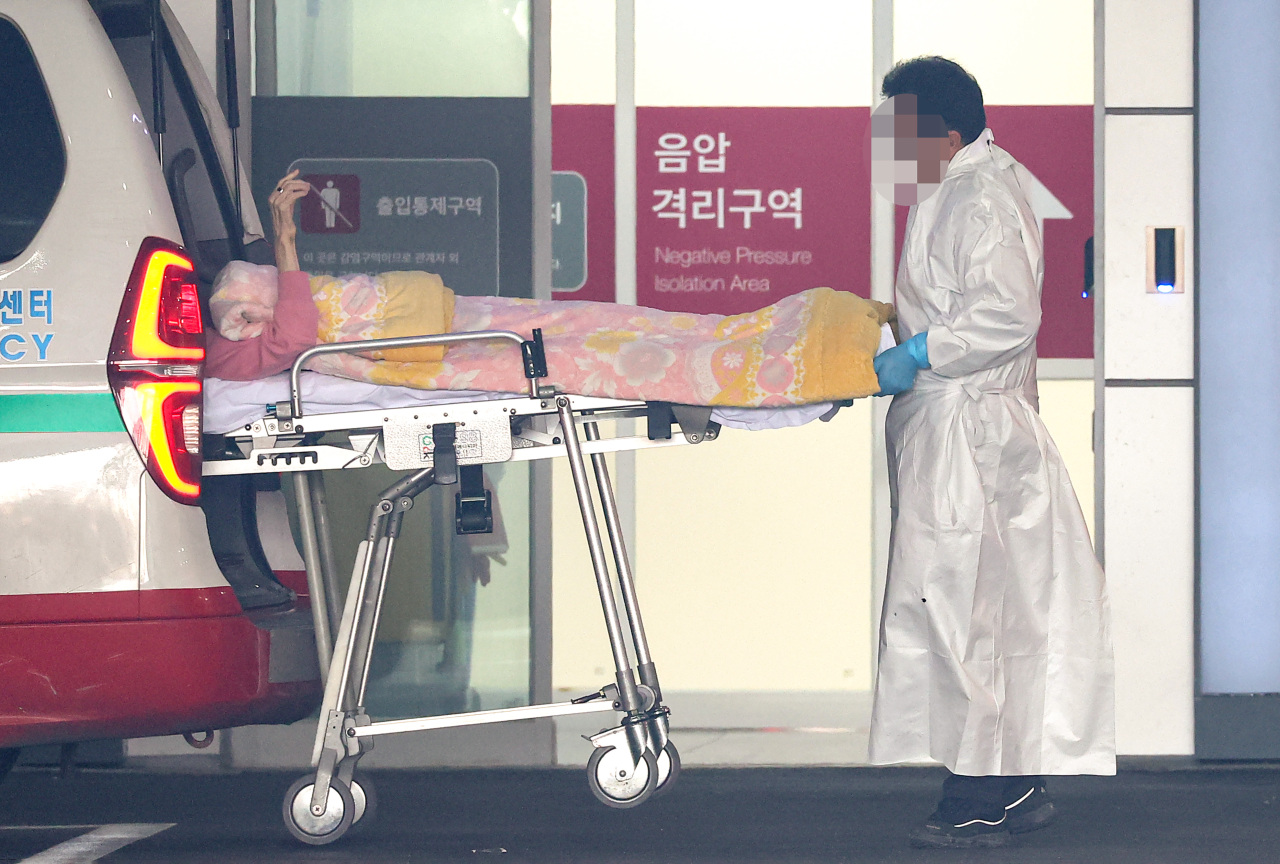Omicron’s BA.2 subvariant rising to dominance in Korea
Hospitals feel strain from prolonging surge
By Kim ArinPublished : March 15, 2022 - 15:51

An even more transmissible subvariant of omicron called BA.2 is soon to become the dominant strain in Korea, which could protract the current wave, experts say.
According to the Korea Disease Control and Prevention Agency’s weekly update on circulating variants of concern, posted Monday, the BA.2 strain accounted for 26.3 percent of all analyzed cases in the previous seven days. The share of BA.2 in Korea jumped from 4.9 percent in the third week of February to 10.3 percent in the last week of the same month and 22.9 percent in the first week of March.
Dr. Paik Soon-young, an emeritus professor of microbiology at Catholic University of Korea, told The Korea Herald that based on these trends, “The omicron sublineage is likely to take over as the dominant virus within this month.”
With BA.2’s growing presence, Paik warned of a “potential rebound” in cases around the country because of its ability to infect more people faster than the currently circulating strain.
He added that “deltacron,” a hybrid strain of delta and omicron whose presence here has not yet been detected by local authorities, was not anticipated to prevail over the much more transmissible BA.2 strain, at least not so far.
“Transmissibility is the most important factor in determining a virus’s ability to dominate over others. It’s still too early to tell if the delta-omicron recombinant virus is in fact more transmissible than the omicron lineages, but that doesn’t seem likely,” said.
Dr. Jung Jae-hun, who models forecasts for the government, said over the phone he was cautious about predicting when BA.2 would displace BA.1. “But there’s no denying BA.2 is about to dominate,” he said.
He said BA.2 is assessed to be about 15 to 20 percent more transmissible than BA.1, but the extent of its immune escape and severity was not yet clear.
A week ago, Jung said the “final crisis point” of the omicron wave would fall between later this month and early April, when more than 2,000 patients are expected to fill critical care beds in the country. Asked how BA.2 would affect earlier forecasts, he said “the peak may last longer.”
“Counting new cases at this point is almost pointless. The pressing task now is to expand bed capacity and make oral antivirals more widely available,” he said.
Infectious disease expert Dr. Lee Jacob also called for adding more health care capacity in an interview with a public radio station Tuesday. The BA.2 dominance could elongate the peak period by a week or two, he said.
In a closed-door briefing held Tuesday afternoon, KDCA spokesperson Ko Jae-young said the change in diagnosis system that now lets rapid antigen tests, not just PCR tests, conducted by health professionals confirm cases would enable patients to receive treatment earlier.
“Paxlovid, Pfizer’s COVID-19 pill, can now be prescribed at an earlier stage in the disease,” he explained. “This could make the treatment more accessible to a larger number of home-isolating patients, which in turn could reduce the burden on hospitals.”
The omicron wave is continuing a meteoric rise in Korea. In the 24 hours of Monday ending midnight, 362,338 new cases were logged. The latest seven-day average of daily cases was 336,982, up from 218,930 the week before. This is more than 22 times the seven-day average of 14,900 from the last week of January, when omicron had just been declared the dominant virus here.
With soaring cases, hospitals remain under strain. The most recent statistics from last week showed around 61 percent of all critical care beds around the country were occupied. But what the bed counts do not tell are increasing proportions of health care workers who cannot come into work because they’re also contracting the virus at a much higher rate, according to infectious disease specialist Dr. Eom Joong-sik.
Eom, who works at Gachon University Medical Center, a designated-COVID-19 hospital in Incheon near Seoul, said his colleagues were “getting infected left and right.” “I’ve humbly accepted the fact that soon it could be my turn,” he said.
To deal with staffing shortages the authorities revised the guidelines to cut mandatory isolation time to three days for health care workers, but not all recover in time to be able to return to work, he said.
On BA.2’s inevitable takeover and the imminent decision on social distancing policy, Eom said, “Easing restrictions further would only cause the wave to grow larger. We all know that.”
Although the official announcement is not to come until later this week, the Ministry of Health and Welfare has hinted at dropping more rules, citing omicron’s low fatality rate.
During Tuesday’s briefing, Son Young-rae, the Health Ministry spokesperson, said over the last four weeks the case fatality rate has fallen to a level that is “comparable to the seasonal flu.” He said fewer patients were ending up in hospitals than the government had earlier predicted.
The absolute number of deaths has been demonstrating a record climb, however. The death count of the last week averaged 229 people per day, with the fatality rate for that period hovering around 0.07 percent.
Son declined to reply immediately to press questions asking what kind of preparations were underway to help hospitals cope with the subvariant spreading. He added that “based on early data from around the world, omicron’s variations are not believed to be worse or more dangerous than omicron itself.”
By Kim Arin (arin@heraldcorp.com)








![[KH Explains] How should Korea adjust its trade defenses against Chinese EVs?](http://res.heraldm.com/phpwas/restmb_idxmake.php?idx=644&simg=/content/image/2024/04/15/20240415050562_0.jpg&u=20240415144419)











![[Today’s K-pop] Stray Kids to return soon: report](http://res.heraldm.com/phpwas/restmb_idxmake.php?idx=642&simg=/content/image/2024/04/16/20240416050713_0.jpg&u=)